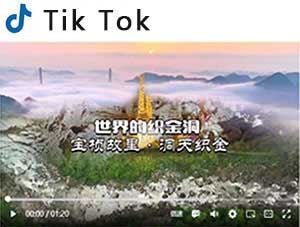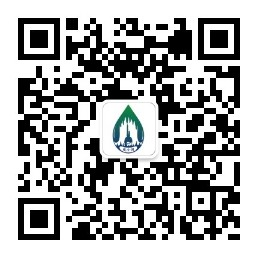Chinese ancient geological thoughts and geologists
(1) Ancient books
Yu Gong, Shanhaijing and Guanzi are the earliest batch of writings concerning geography, geology, hydrology and meteorology completed in the Spring and Autumn Period and Warring States Period (770-221B.C.).
(2) Zhang Heng in the Eastern Han Dynasty
Zhang Heng (78~139), a distinguished scientist in the Eastern Dynasty, created the first seismograph in the world-Hou Feng Di Dong Yi (instrument for measuring the earthquake) in 132 and measured out the Longxi earthquake occurring 650km away by using this seismograph in 138.
(3) Li Daoyuan in the Northern and Southern Dynasties
Li Daoyuan (about 470—527), remarkable geologist in the Northern and Southern Dynasties complied the famous geological work Shui Jingzhu (i.e.Commentary on the Water Classic in the period of 512~518. This writing covers wide regions (including China and some neighboring areas), and the recording contents include the geology, geography and hydrology concerning about river, waterfall, lake, sandstorm, karst cave, volcano, earthquake, landslide, landslip, hot spring, meteorite, fossil, minerals, rocks and mineral products, still with reference value to present time.
(4) Shen Kuo in the Song Dynasty
Mengxi Bitan (i.e.Dream Pool Essays), written by Shen Kuo (1031—1095) in the Song Dynasty, is an encyclopedic work with brilliance, in which, many respects of the earth science are covered, including meteorite, earthquake, minerals, ore deposit, fossils, river, underground river, sea-land change, topographic survey and charting, etc. E.g. the writing discusses the erosion effects and sedimentation of running water; infers that North China Plain is the alluvial plain formed by the deposition of sediments carried by river from upstream to downstream; Shen Kuo also infers that the place a thousand li away from the sea in the east was the coast in the ancient times according to the fossils of marine snails and mussels found among cliffs in the eastern Taihang Mountain; he still infers the change of paleogeography and paleoclimate according to the fossils. Shen Kuo’ correct understanding about fossils is 400 years earlier than the similar viewpoint proposed by Da Vinci from Italy; the past-present analog method used when analyzing the geological problems is more than 700 years earlier than the method of “Past is the key to the Present” applied in Principles of Geology written by Lyell. Shen Kuo also firstly uses “petroleum”-the scientific term, which has been used to this day.
(5) Xu Hongzu in the Ming Dynasty
Xu Xiake Youji (i.e.Travels of Xu Xiake) is an investigation and documenting work, written by Xu Hongzu (1586-1641) in the Ming Dynasty. This writing has made valuable recordings about karst, volcano, hot spring, hydrology, landform, minerals, etc. in many regions of China. Therein, detailed recording and exploration about the karst landform were at the advanced level in the world at that time, and is the earliest work with a systematic discussion about the limestone landform.
(6) Song Yingxing (1587—1661 ?) in the Ming Dynasty
Tian Gong Kai Wu (i.e.Exploitation of the Work of Nature) is written by Song Yingxing (1587—1661 ?) in the Ming Dynasty. The writing detailedly records the origin, form and properties of non-metallic minerals; and proposes the earlier coal classification method in the world according to the hardness and volatility of coal; especially discusses the mining engineering technology in China for the first time in a systematic way, with detailed description about the mineral mining, timbering under the shaft, ventilation, mine filling, mineral washing, etc.

















